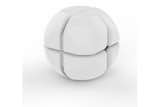
A perfect storm is brewing. The prolonged supply chain crisis, soaring demand for electric vehicles and a dramatic increase in global demand for energy have led to a severe shortage and escalating costs of batteries. In fact, The Wall Street Journal recently reported that lithium prices are rising at their fastest pace in years and that the surge is fueling fears about long-term battery metals shortages.
When you consider that everything from electric vehicles and smartphones to communications systems and medical devices rely on battery power, it becomes clear why virtually every industry is impacted by these shortages and the subsequent rising prices. Therefore, choosing the right batteries is more important than ever to maximize your investment and plan ahead.
There are numerous battery power options available today and some of the most common considerations include capacity, price, size and safety. There is, however, another important factor to consider that will impact your product's performance – its impact on the environment.
Different battery chemistries, for example, offer more stability than others and are more susceptible to factors such as impact, temperature, humidity, vibrations, magnetic fields, etc. The application and the environment in which it will be operating should be key factors in your battery decisions.
Manufacturers commonly use lithium batteries to power portable electronic devices such as cell phones, laptops, medical devices and even electric vehicles because they charge faster, last longer and have a higher power density in a lighter package than some other battery types.
There is, however, more than one type of lithium battery, and while they share some attributes, such as being rechargeable, there are also significant differences.
Lithium-ion batteries are becoming more popular because of their long cycle life and short charge times. All lithium-ion batteries are named for their active materials. Lithium-ion cobalt, for example, consists of lithium carbonate and cobalt and represents one of the most common types.
This chemistry is attractive because it is powerful, packing a lot of energy in a compact, portable package, making it a popular choice for mobile phones, laptops, power tools and digital cameras. Lithium-ion iron phosphate (LiFe) represents a newer phosphate-based technology with stronger thermal and chemical stability which equates to a better safety profile.
While many applications enable you to use either type of lithium-ion batteries, when it comes to operational efficiency, safety and return on investment, there are significant differences. Consider these other essential points of comparison:
Energy Density & Safety
Lithium-ion batteries have the highest energy density among all rechargeable battery types, providing a powerful discharge. Among lithium-based batteries, lithium-ion cobalt offers superior energy density, albeit less stable chemistry than LiFe batteries, as mentioned above.LiFe batteries can withstand even extreme high and cold temperatures, and, most importantly from a safety standpoint, LiFe batteries don’t experience “thermal runaway,” causing them to overheat or result in fires or explosions, such as those that have plagued the Tesla Model S and Samsung Galaxy Note 7 smartphones.
Disposal & Environmental Impact
It goes without saying that once you purchase a battery, you become responsible for the eventual disposal of it. The lithium cobalt oxide chemistry of a lithium-ion cobalt battery is considered a hazardous material, not only because it is combustible, but it also can cause allergic reactions to the eyes and skin when exposed to them and severe medical issues when swallowed.Therefore, special disposal considerations must be made. On the other hand, lithium-ion iron phosphate (LiFe) is nontoxic and can therefore be disposed of more easily. Ask your supplier about its recycling and end-of-life programs — they should be well thought-out and consistent with your goals when it comes to corporate and environmental responsibility.
Total cost of ownership
A battery’s warranty can provide significant insight into the anticipated lifespan of the battery and reflect the manufacturer's confidence in its product. Lithium-ion batteries are rechargeable meaning they have a relatively long lifespan, though the iron phosphate chemistry of LiFe batteries provides for a longer lifespan.LiFe batteries cost more upfront, but when you consider factors including the shorter battery life, a LiFe battery has a lower total cost of ownership, which can have a significant impact on the bottom line when you consider the number of batteries used in industrial and healthcare settings. As always, using batteries according to the manufacturer's specifications can maximize lifespan.
Lithium-ion iron phosphate batteries are sought after for devices and equipment where safety and longevity are desired but extremely high-energy density is not required.
They have higher up-front costs than other battery systems including lithium cobalt, though LiFE batteries offer a higher return on investment because they can be charged more frequently and have a higher charge cycle count, meaning they will last longer.
The current supply chain crisis and escalating costs are forcing companies of all sizes and across all industries to reevaluate their operational strategies and purchasing decisions, including the power that sources their core products and businesses.
To make the most strategic choices and maximize investments, it pays to create strong relationships with trusted suppliers and do your homework when it comes to innovative new power sources. Doing so will help you mitigate supply chain risk, navigate the severe battery shortages and subsequent rising prices and put you in a better position to weather the storm.
---
Patrick Ney is the Vice President and Co-founder of Definitive Technology Group.























